Charles E W Bean, Diaries, AWM38 3DRL 606/67/1 - November - December 1916 - Part 1
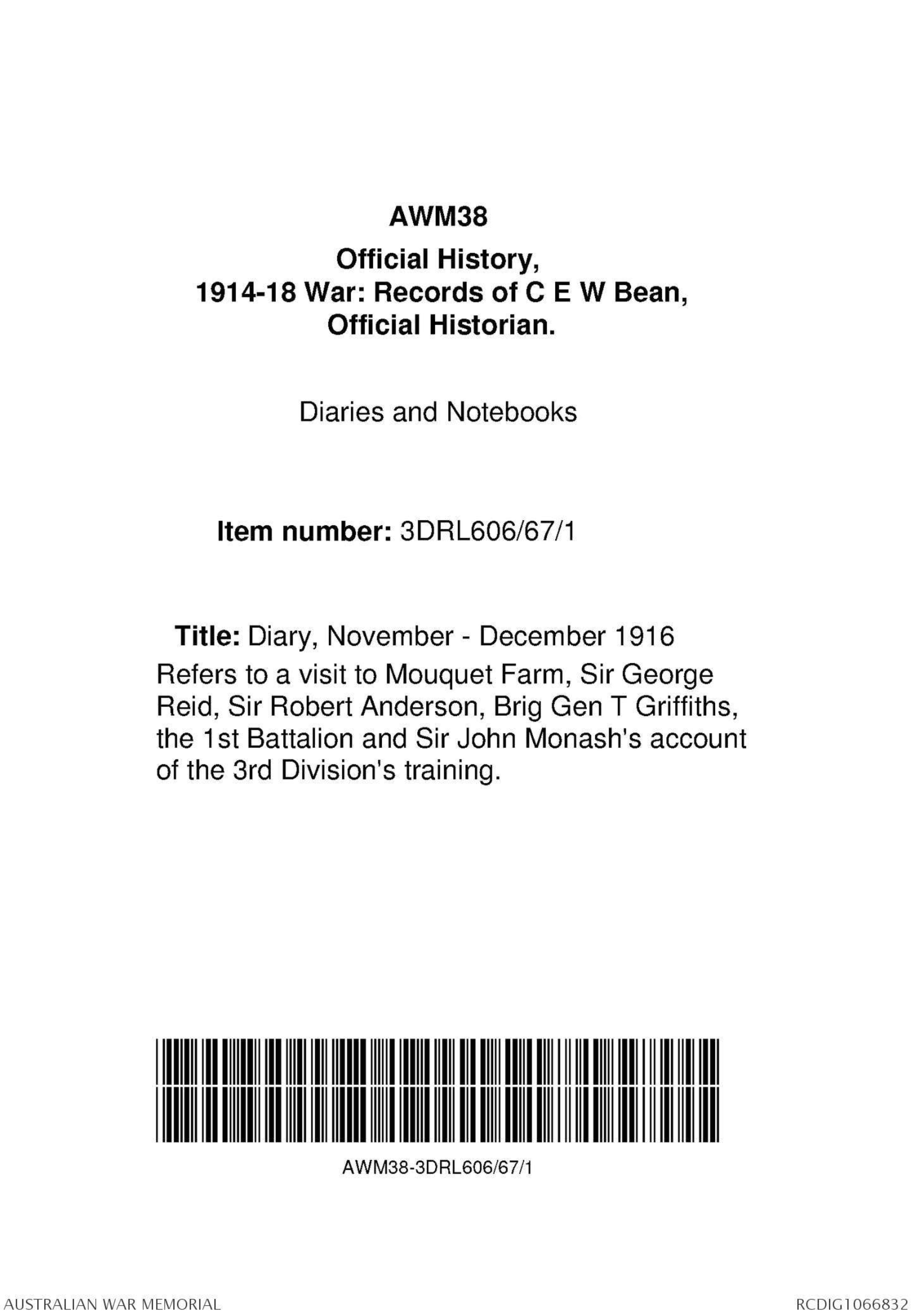
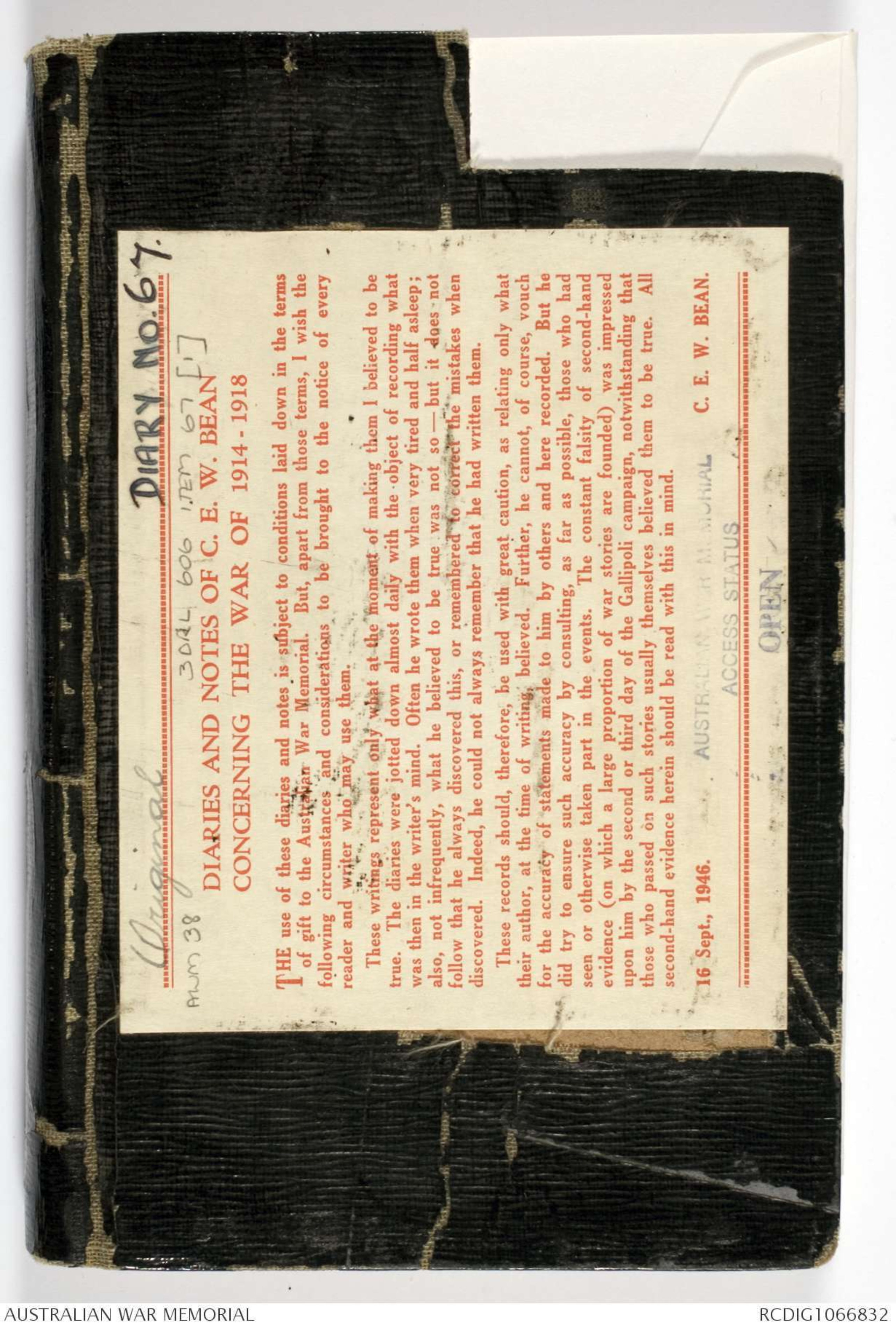
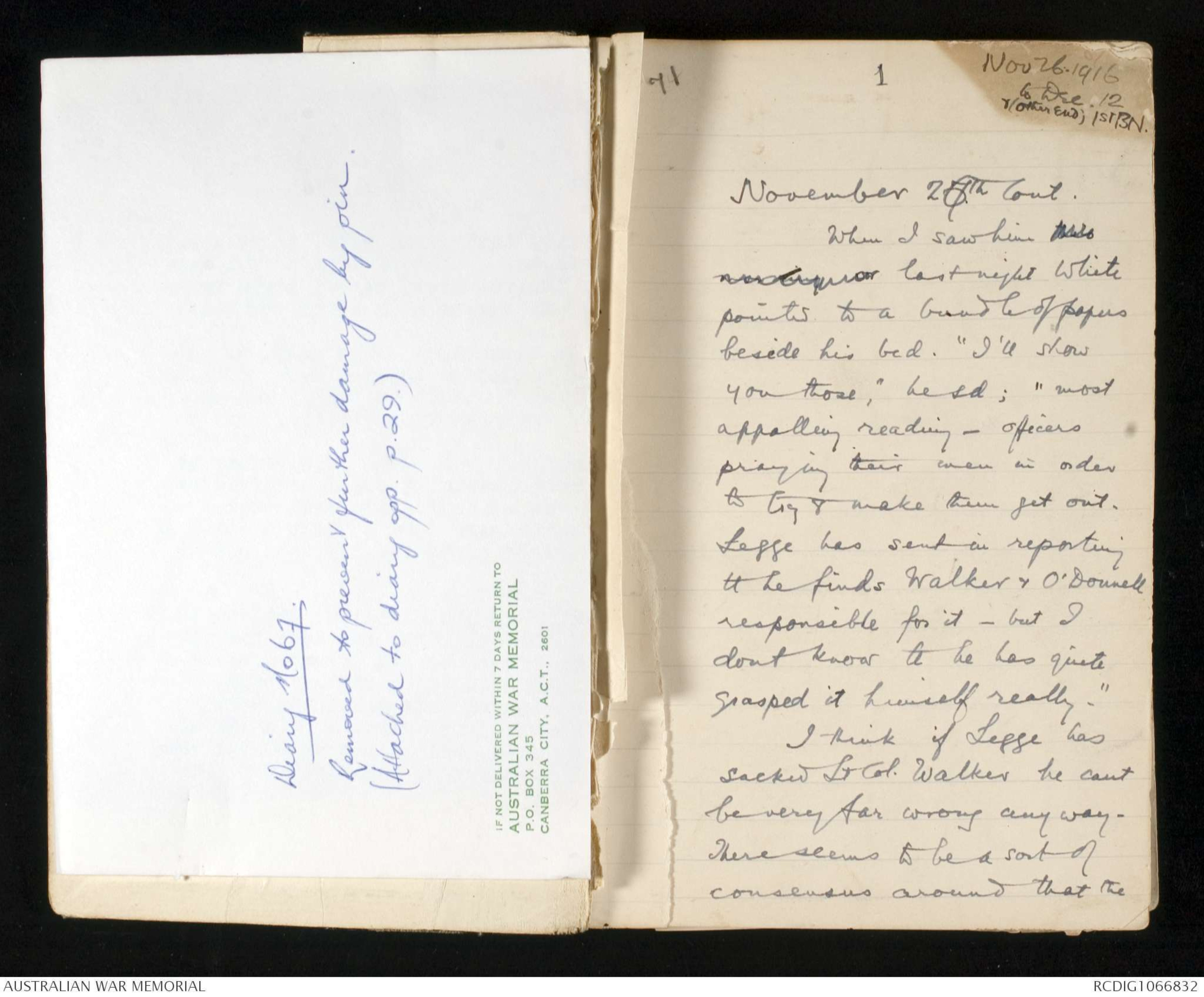
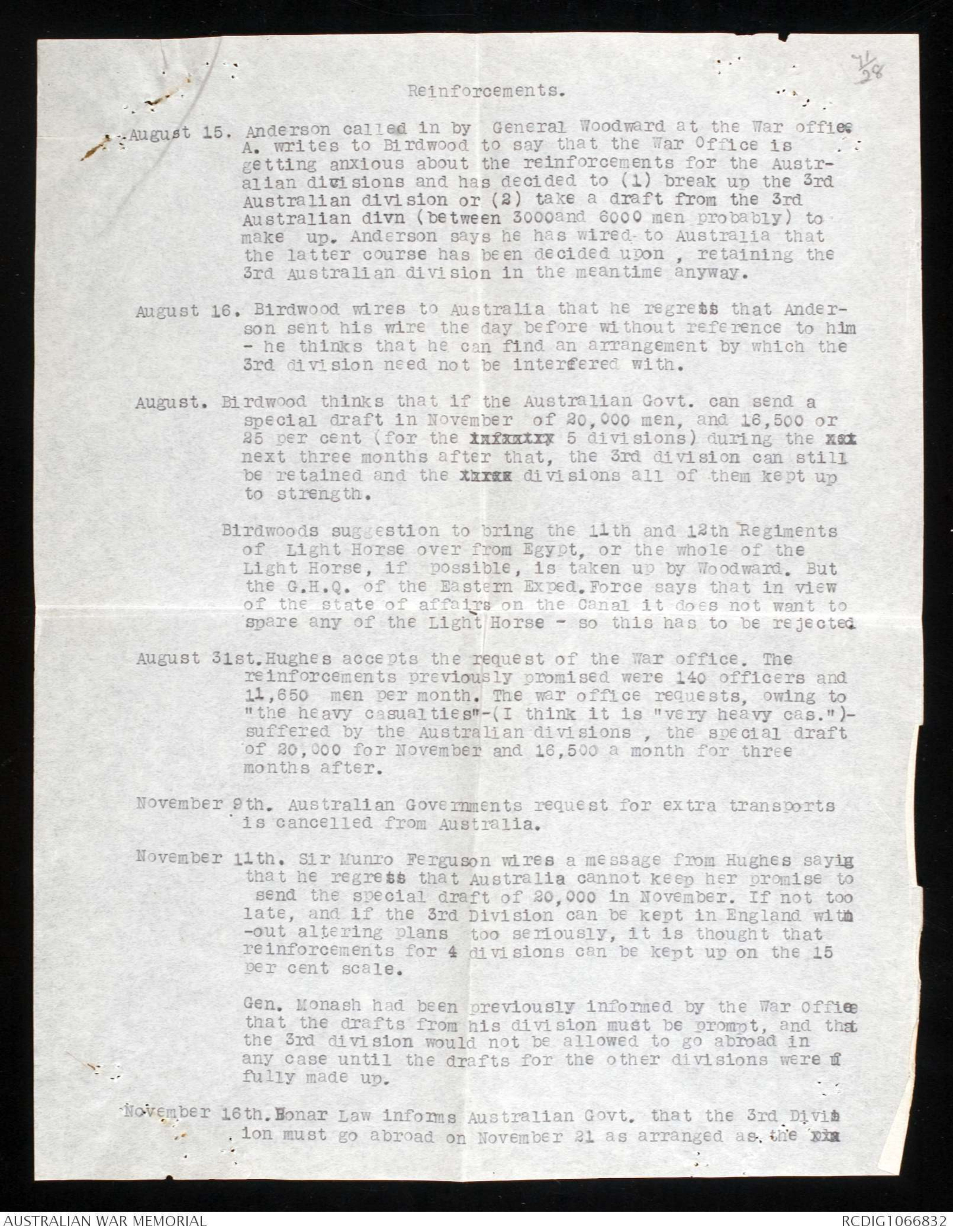
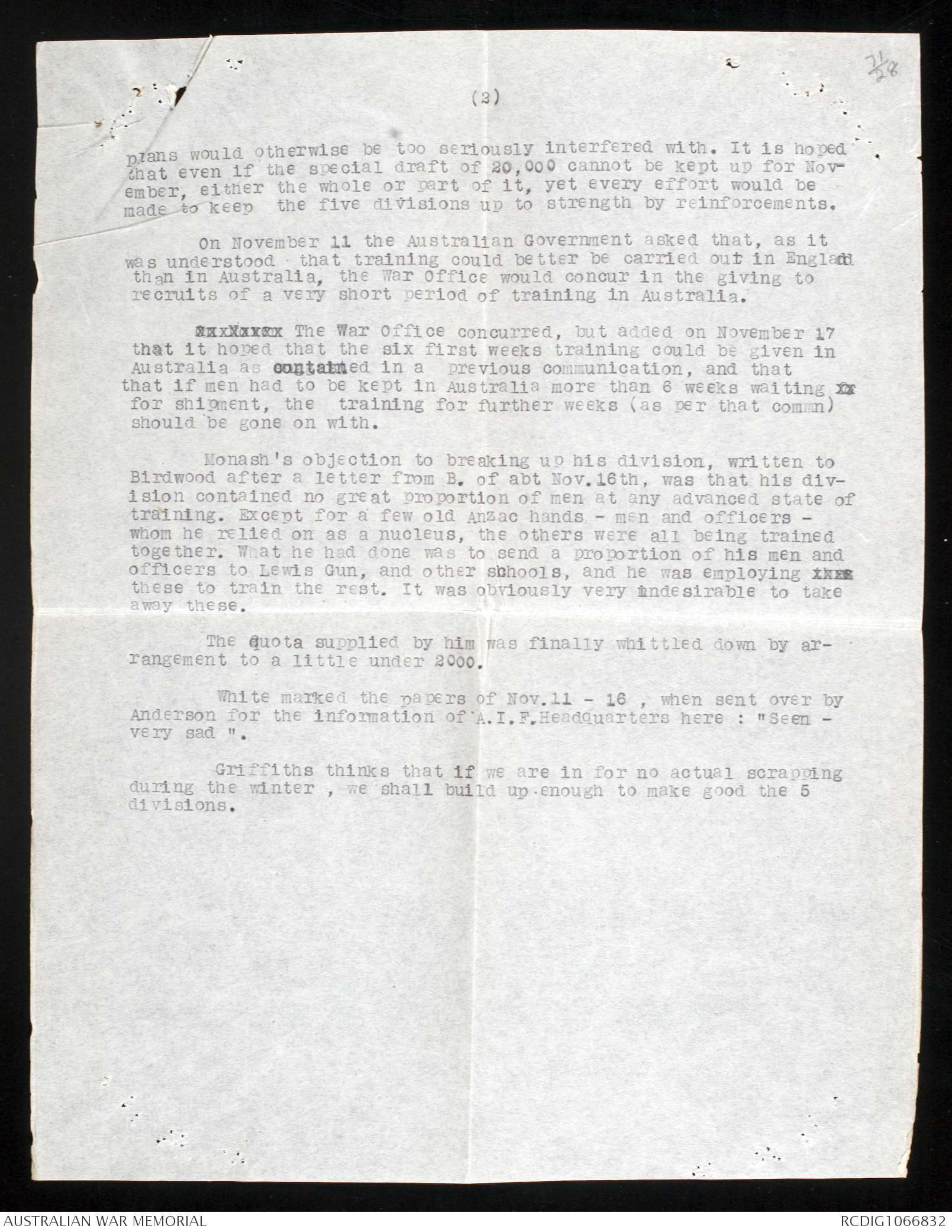
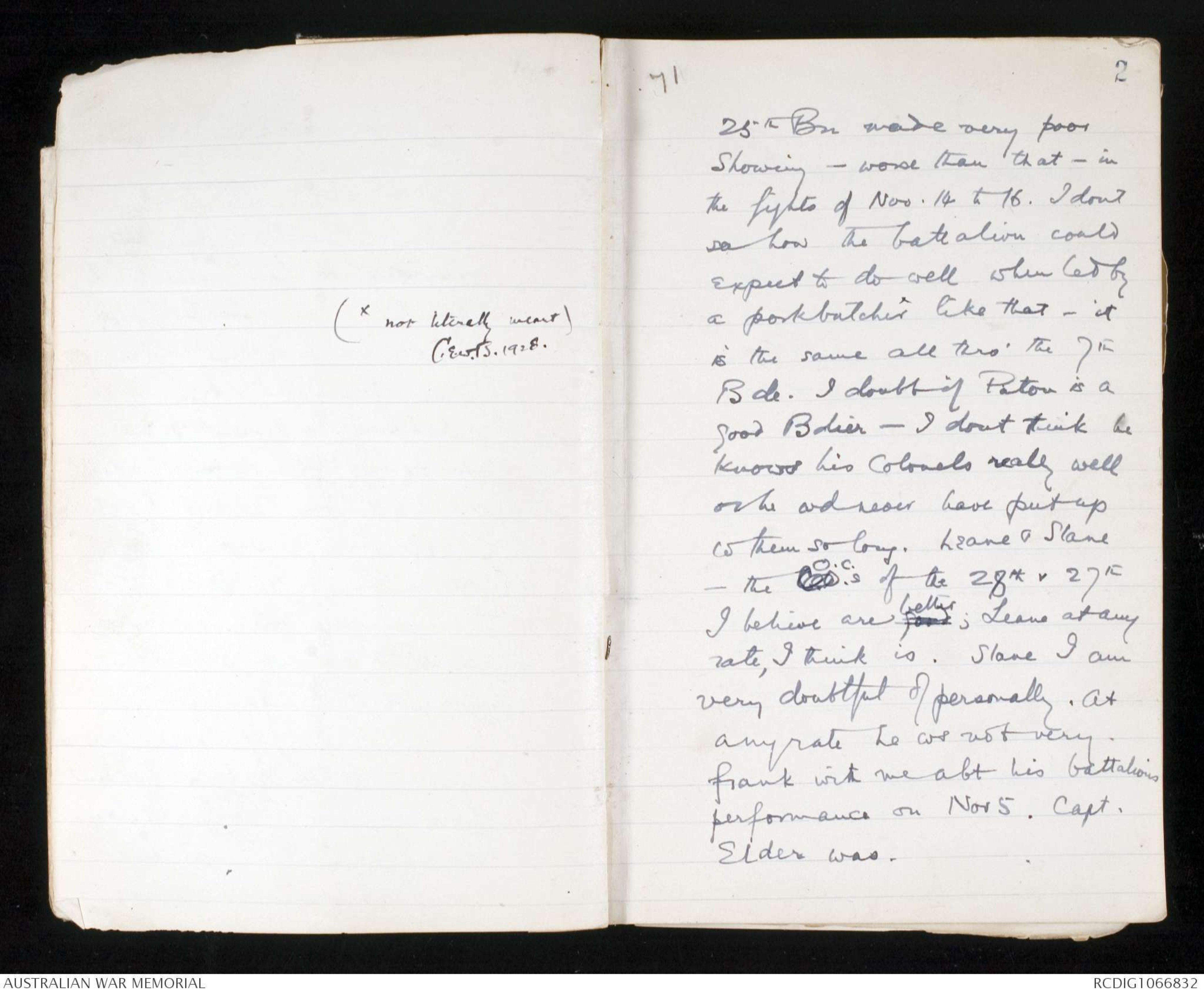
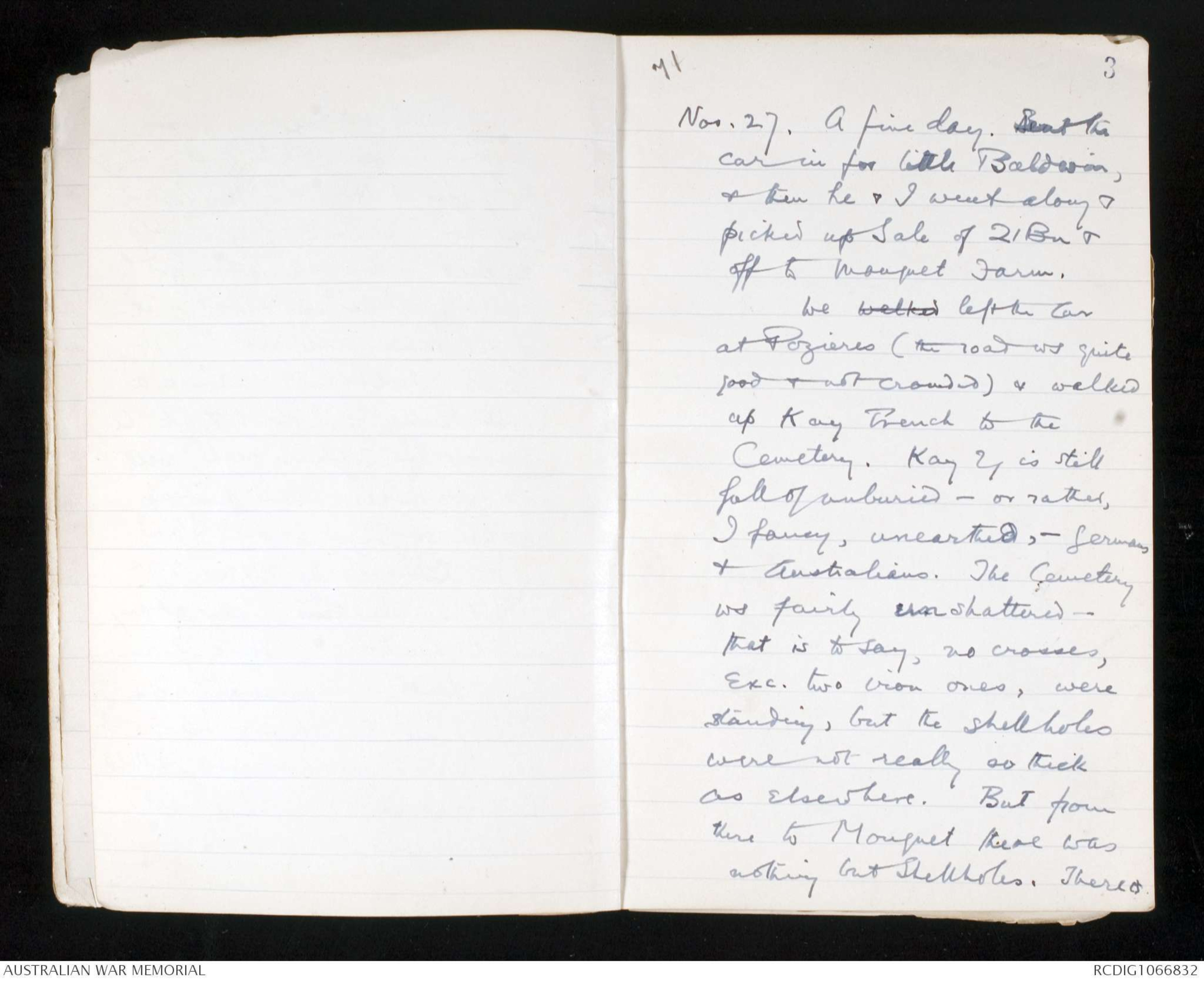
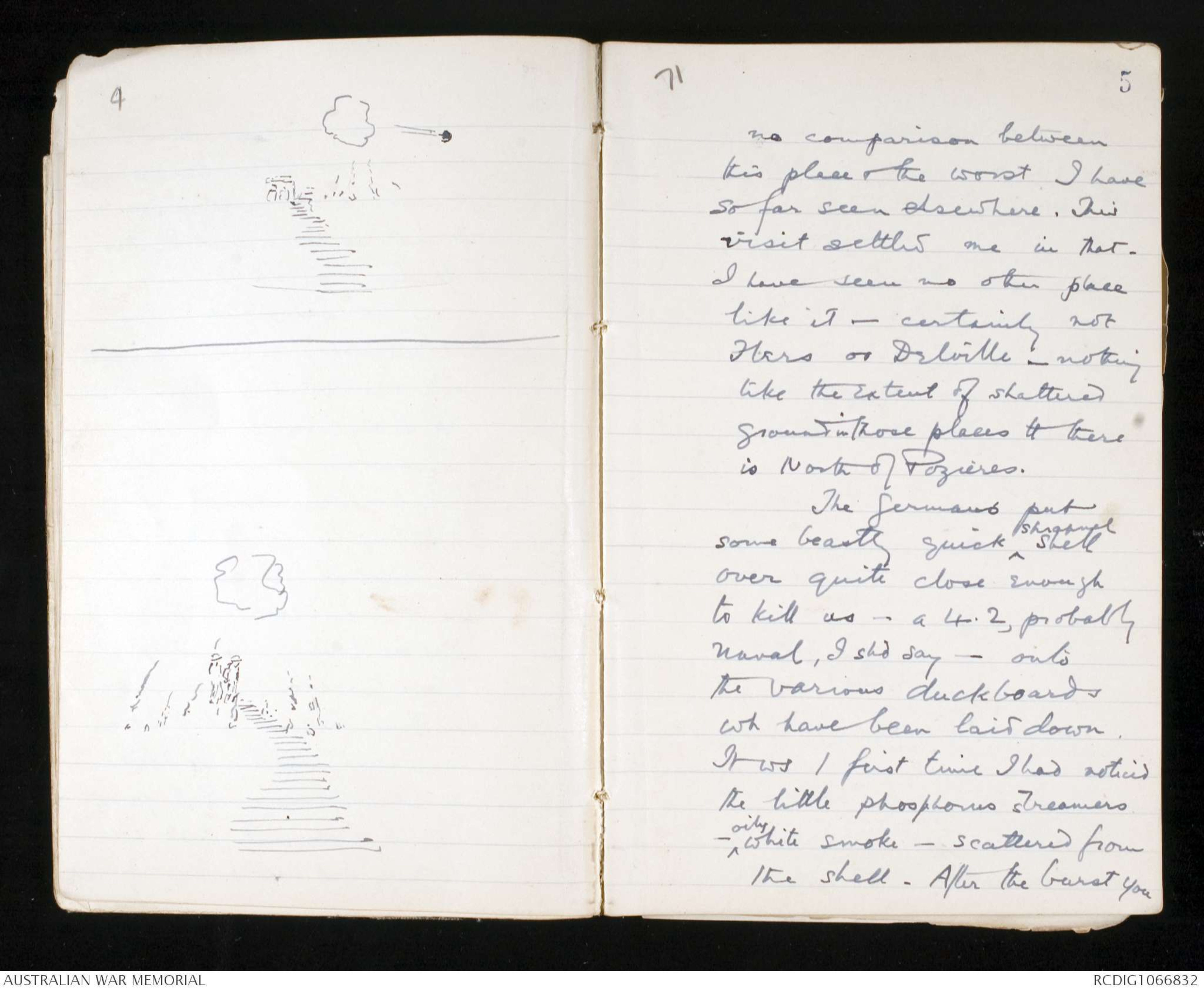
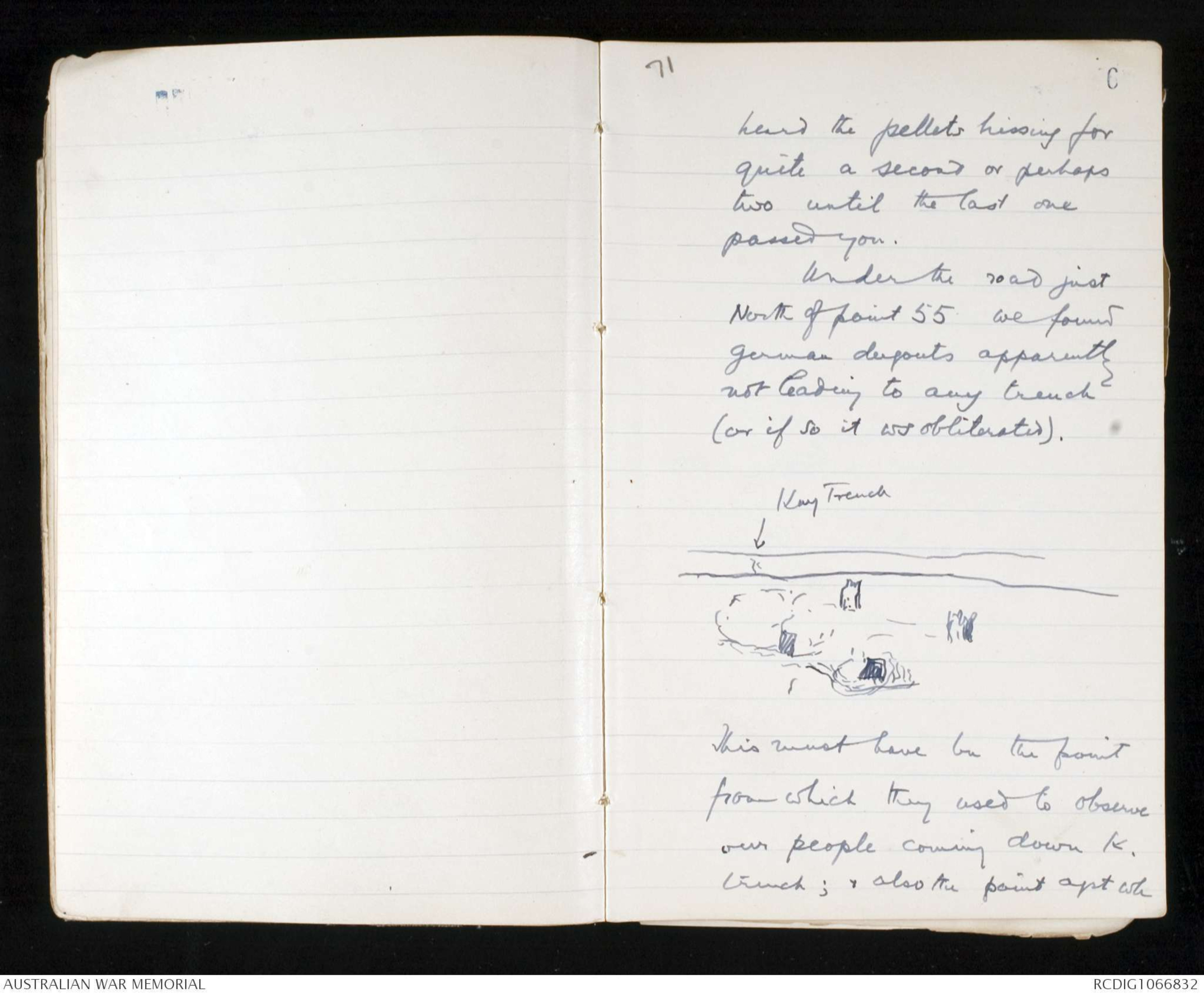
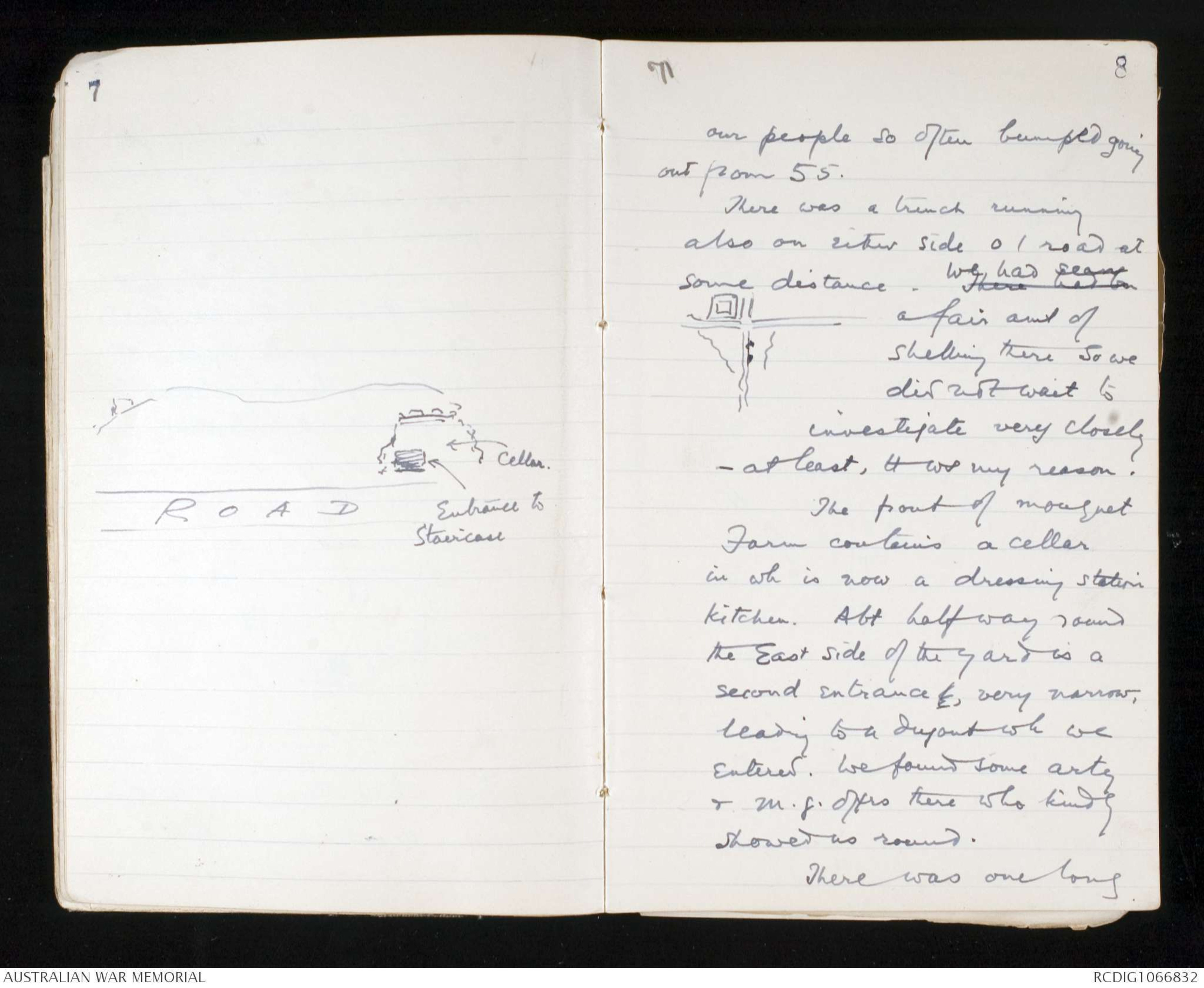
AWM38
Official History,
1914-18 War: Records of C E W Bean,
Official Historian.
Diaries and Notebooks
Item number: 3DRL606/67/1
Title: Diary, November - December 1916
Refers to a visit to Mouquet Farm, Sir George
Reid, Sir Robert Anderson, Brig Gen T Griffiths,
the 1st Battalion and Sir John Monash's account
of the 3rd Division's training.
AWM38-3DRL606/67/1
Original DIARY No.67.
AWM38 3DRL 606 ITEM 67/1
DIARIES AND NOTES OF C.E.W. BEAN
CONCERNING THE WAR OF 1914 - 1918
The use of these diaries and notes is subject to conditions laid down in the terms
of gift to the Australian War Memorial. But, apart from those terms, I wish the
following circumstances and considerations, to be brought to the notice every
reader and writer who may use them.
These writings represent only what at the moment of making them I believed to be
true. The diaries were jotted down almost daily with the object of recording what
was then in the writer's mind. Often he wrote them when very tired and half asleep;
also, not infrequently, what he believed to be true was not so - but it does not
follow that he always discovered this, or remembered to correct the mistakes when
discovered. Indeed, he could not always remember that he had written them.
These records should, therefore, be used with great caution, as relating only what
their author, at the time of writing, believed. Further, he cannot, of course, vouch
for the accuracy of statements made to him by others and here recorded. But he
did try to ensure such accuracy by consulting, as far as possible, those who had
seen or otherwise taken part in the events. The constant falsity of second-hand
evidence (on which a large proportion of war stories are founded) was impressed
upon him by the second or third day of the Gallipoli campaign, not withstanding that
those who passed on such stories usually themselves believed them to be true. All
second-hand evidence herein should be read with this in mind.
16 Sept., 1946. C.E.W. BEAN.
AUSTRALIAN WAR MEMORIAL
ACCESS STATUS
OPEN
Diary No 67.
Removed to prevent further damage by pin.
(Attached to diary opp. p.29)
IF NOT DELIVERED WITHIN 7 DAYS RETURN TO
AUSTRALIAN WAR MEMORIAL
P.O.BOX 345
CANBERRA CITY, A.C.T., 2601
71 1
Nov 26. 1916
to Dec. 12
& (other end) 1st BN.
November 26th Cont.
When I saw him tsxxxxxxx last night White
pointed to a bundle of papers
beside his bed. "I'll show
you those," he sd; "most
appalling reading - officers
praying their men in order
to try & make them get out.
Legge has sent in reporting
tt he finds Walker & O’Donnell
responsible for it - but I
dont know tt he has quite
grasped it himself really."
I think if Legge has
sacked Lt Col. Walker he cant
be very far wrong any way -
There seems to be a sort of
consensus around that the
71/28
Reinforcements.
August 15. Anderson called in by General Woodward at the War office
A. Writes to Birdwood to say that the War Office is
getting anxious about the reinforcements for the
Australian divisions and has decided to (1) break up the 3rd
Australian division or (2) take a draft from the 3rd
Australian divn (between 3000 and 6000 men probably) to
make up. Anderson says he has wired to Australia that
the latter course has been decided upon, retaining the
3rd Australian division in the meantime anyway.
August 16. Birdwood wires to Australia that he regrets that Anderson
sent his wire the day before without reference to him
- he thinks that he can find an arrangement by which the
3rd division need not be interfered with.
August. Birdwood thinks that if the Australian Govt. can send a
special draft in November of 20,000 men, and 16,500 or
25 per cent (for the Infantry 5 divisions) during the nst
next three months after that, the 3rd division can still
be retained and the xxxxx divisions all of them kept up
to strength.
Birdwoods suggestion to bring the 11th and 12th Regiments
of Light Horse over from Egypt, or the whole of the
Light Horse, if possible, is taken up by Woodward. But
the G.H.Q. of the Eastern Exped. Force says that in view
of the state of affairs on the Canal it does not want to
spare any of the Light Horse - so this has to be rejected.
August 31st. Hughes accepts the request of the War office. The
reinforcements previously promised were 140 officers and
11,650 men per month. The war office requests, owing to
"the heavy casualties"- (1 think it is "very heavy cas.") -
suffered by the Australian divisions, the special draft
of 20,000 for November and 16,500 a month for three
months after.
November 9th. Australian Governments request for extra transports
is cancelled from Australia.
November 11th. Sir Munro Ferguson wires a message from Hughes saying
that he regretts that Australia cannot keep her promise to
send the special draft of 20,000 in November. If not too
late, and if the 3rd Division can be kept in England
without altering plans too seriously, it is thought that
reinforcements for 4 divisions can be kept up on the 15
per cent scale.
Gen. Monash had been previously informed by the War Office
that the drafts from his division must be prompt, and that
the 3rd division would not be allowed to go abroad in
any case until the drafts for the other divisions were f
fully made up.
November 16th. Bonar Law informs Australian Govt. that the 3rd Division
must go abroad on November 21 as arranged as the xxx
71/28
(3)
plans would otherwise be too seriously interfered with. It is hoped
that even if the special draft of 20,000 cannot be kept up for
November, either the whole or part of it, yet every effort would be
made to keep the five divisions up to strength by reinforcements.
On November 11 the Australian Government asked that, as it
was understood that training could better be carried out in England
than in Australia, the War Office would concur in the giving to
recruits of a very short period on training in Australia.
xxxxxx The War Office concurred, but added on November 17
that it hoped that the six first weeks training could be given in
Australia as contained in a previous communication, and that
that if men had to be kept in Australia more than 6 weeks waiting xx
for shipment, the training for further weeks (as per that commn)
should be gone on with.
Monash’'s objection to breaking up his division, written to
Birdwood after a letter from B. of abt Nov. 16th, was that his division
contained no great proportion of men at any advanced state of
training. Except for a few old Anzac hands - men and officers -
whom he relied on as a nucleus, the others were all being trained
together. What he had done was to send a proportion of his men and
officers to Lewis Gun, and other schools, and he was employing xxxx
these to train the rest. It was obviously very undesirable to take
away these.
The quota supplied by him was finally whittled down by
arrangement to a little under 2000.
White marked the papers of Nov. 11 - 16, when sent over by
Anderson for the information of A.I.F. Headquarters here: "Seen -
very sad".
Griffiths thinks that if we are in for no actual scrapping
during the winter, we shall build up enough to make good the 5
divisions.
(xnot literally meant)
C.E. W.B. 1928.
71 2
25th Bn made very poor
showing - worse than that - in
the fights of Nov. 14 to 16. I dont
see how the battalion could
expect to do well when led by
a pork butcherx like that - it
is the same all thro' the 7th
Bde. I doubt if Paton is a
good Bdier - I dont think he
knows his Colonels really well
or he wd never have put up
w them so long. Leane & Slane
- the C.O. O.C.s of the 28th & 27th
I believe are good better; Leane at any
rate, I think is. Slane I am
very doubtful of personally. At
any rate he ws not very
frank with me abt his battalions
performance on Nov 5. Capt
Elder was.
71 3
Nov. 27. A fine day. Sent the
car in for little Baldwin
& then he & I went along &
picked up Sale of 21 Bn &
off to Mouquet Farm.
We walked left the car
at Pozieres (the road ws quite
good & not crowded) & walked
up Kay Trench to the
Cemetery. Kay Trench is still
full of unburied - or rather,
I fancy, unearthed, - Germans
& Australians. The Cemetery
ws fairly unshattered -
that is to say, no crosses,
exc. two iron ones, were
standing, but the shellholes
were not really so thick
as elsewhere. But from
there to Mouquet there was
nothing but Shellholes. There is
4
Diagram - see original document
71 5
no comparison between
this place & the worst I have
so far seen elsewhere. This
visit settled me in that.
I have seen no other place
like it - certainly not
Flers or Delville - nothing
like the extent of shattered
ground in those places tt there
is North of Pozieres.
The Germans put
some beastly quick ^shrapnel shell
over quite close enough
to kill us - a 4.2, probably
naval, I shd say - onto
the various duckboards
wh have been laid down.
It ws / first time I had noticed
the little phosphorus streamers
- ^oily white smoke - scattered from
the shell. After the burst you
71 6
heard the pellets hissing for
quite a second or perhaps
two until the last one
passed you.
Under the road just
North of point 55 we found
German dugouts apparently
not leading to any trench
(or if so it ws obliterated).
Diagram - see original document
This must have bn the point
from which they used to observe
our people coming down K.
trench; & also the point agst wh
7
Diagram - see original document
71 8
our people so often bumped going
out from 55.
There was a trench running
also on either side o / road at
some distance. There had bn We had seen
Diagram - see original document
a fair amt of
shelling there so we
did not wait to
investigate very closely
- at least, tt ws my reason.
The front of Mouquet
Farm contains a cellar
in wh is now a dressing station
kitchen. Abt half way round
the East side of the yard is a
second entrance f, very narrow,
leading to a dugout wh we
entered. We found some arty
& m.g. offrs there who kindly
showed as round.
There was one long
 Deb Parkinson
Deb ParkinsonThis transcription item is now locked to you for editing. To release the lock either Save your changes or Cancel.
This lock will be automatically released after 60 minutes of inactivity.